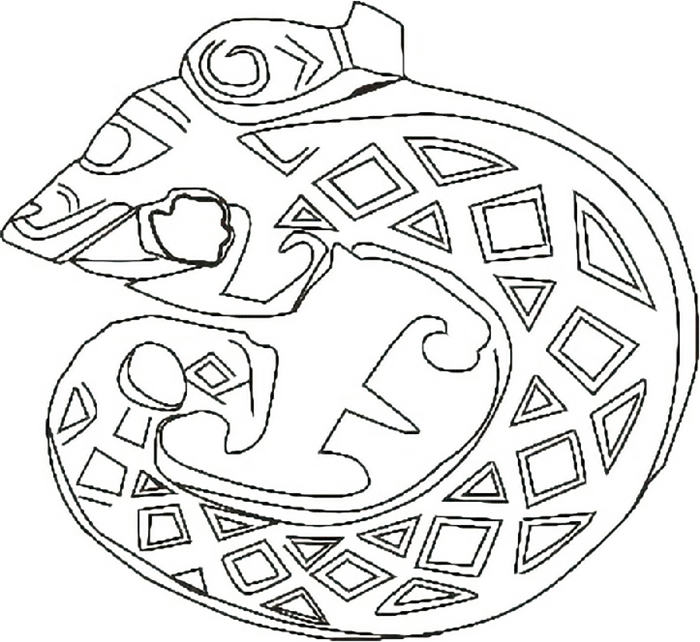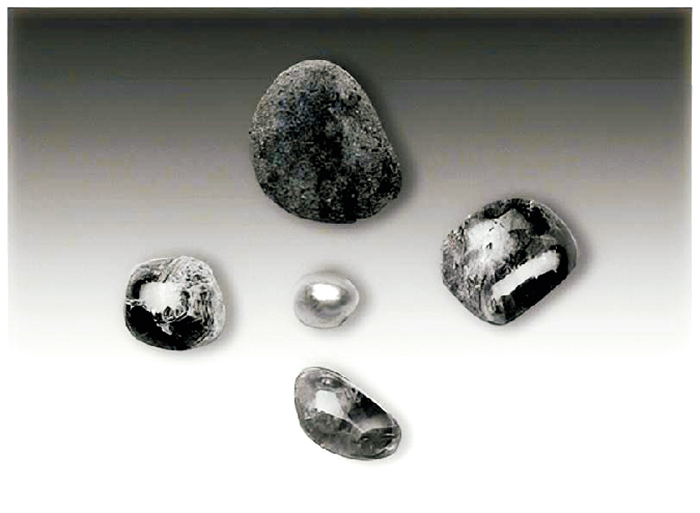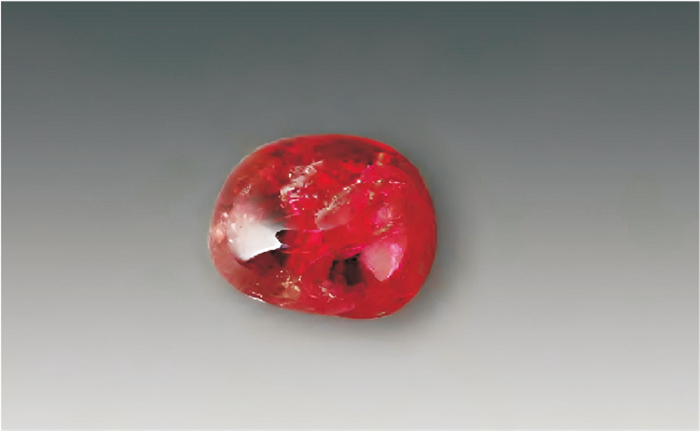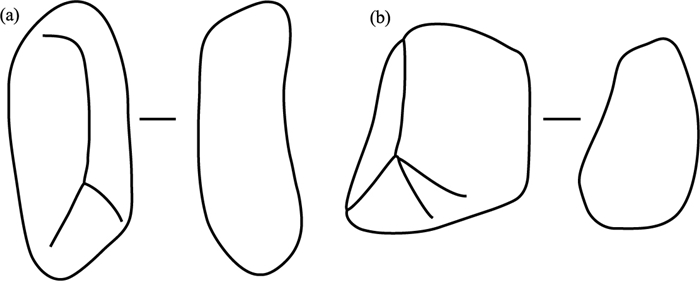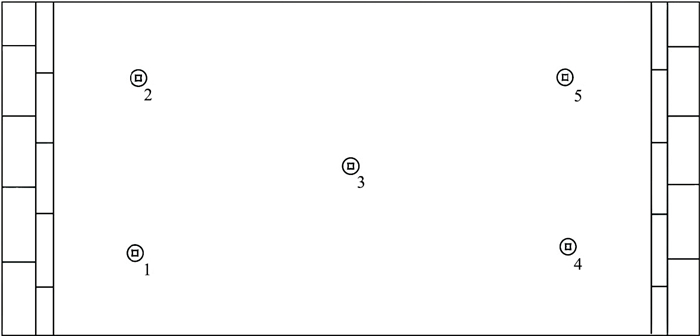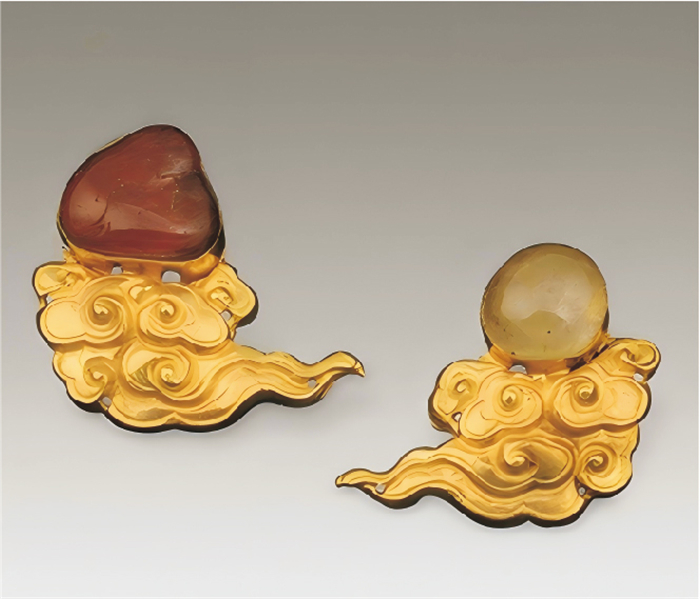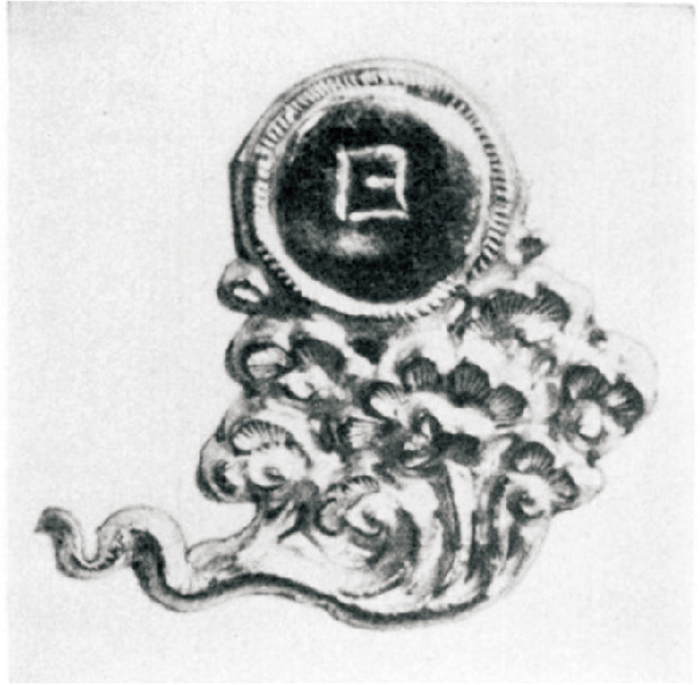A Study on the Function of Gemstone in Yansheng (Warding off Evil Spirits and Seeking Good Fortune) in Ming Dynasty Tombs
-
摘要:
明代是中国彩色宝石使用的鼎盛时期, 宝石不仅数量众多,而且使用范围广,除具备装饰功能外,还偶被应用于墓葬厌胜。从现存考古资料显示,明代墓葬中宝石的厌胜功能主要通过数量、色彩、摆放位置等方面来表现。本研究利用考古材料与文献资料相互印证的研究方法认为,宝石厌胜出现在明代墓葬中的现象是由五行学说、宗教观念以及丧葬习俗共同作用下形成,并与明代经济贸易、墓主社会阶层和经济实力等密不可分。最后提出以往考古发掘报告中被认为是器物脱落的宝石或许并非脱落,而是某种特定功能下的有意为之。
Abstract:The Ming Dynasty represented a peak in the utilization of coloured gemstones in China. During this period, coloured gemstones were not only abundant but also extensively employed. Functionally, they served not only as decorative items but also occasionally played a role in Yansheng (warding off evil spirits and seeking good fortune) within tombs. Current evidence indicates that the application of gemstones for these purposes in Ming Dynasty tombs primarily depended on their quantity and colour, as well as their placement and arrangement. This study employs a research method that cross-verifies archaeological findings with historical records, leading to the conclusion that the phenomenon of using gems to ward off evil spirits and seek good fortune in tombs was formed under the joint action of Chinese five elements doctrine, religious concepts, and funeral customs during the Ming Dynasty. Furthermore, this phenomenon is closely linked to factors such as economic and trade activities, as well as the social status and financial capabilities of those interred. Meanwhile, the analyses show that the gemstones considered to be dislodged from artifacts in archaeological excavation reports may not be dislodged, but were intentionally placed for a specific function.
-
1. 玉鱼的考古之源
玉鱼是以玉石为材质且以鱼为客观图案的器物,其用途极广。鱼形装饰图案的起源甚早,西安半坡遗址处出土距今约6 000年的人面鱼纹彩陶盆便是其起源明证。与之相对,浙江余姚河姆渡文化出土距今约7 000年的一件木鱼器,以鱼为器型圆雕而成,兼具实用性与美观性双重价值。鱼类既是先民可选择的食物,更因其蕴含丰富的文化内涵而成为了人们珍爱的装饰图案。寻源玉鱼,目前可上溯至新石器时代晚期,远在东北西辽河上游流域的红山文化和长江下游太湖流域的良渚文化墓葬中均有玉鱼出土。例如,良渚文化的一件鱼形玉器——浙江余杭反山墓地M22出土玉鱼,其位于墓主上半身右侧,呈南瓜黄色,圆雕鱼形,造型写实生动,其上刻画了眼部和鱼尾,鱼腹有两个对钻小孔用来系挂[1]。新石器时代的鱼形玉雕,通过夸张和抽象相结合的艺术手法,以简洁而生动的特点,捕捉并再现了鱼的自然之美,但因出土数量有限且研究资料匮乏,故这一时期玉鱼的探讨尚待后续考古工作的进一步推进。
2. 玉鱼的出土概况
“国之大事,在祀与戎。”在各种祭祀、宗教及庆典活动中,玉器成为了人与上天对话的最主要媒介之一。克商之后,周公制礼作乐,玉器即是礼仪仪式中不可或缺的一部分,有“苍璧礼天,黄琮礼地”的记载。商周时期青铜器发展进入高潮,尤其在殷商时期达到顶峰,坚硬且锋利的青铜器具的应用使得琢玉技艺得到显著提升,玉器发展又迎来了一个新高峰。与此同时,商周时期亦是中国鱼文化衍生期的第一个阶段,铜鼎、铜盘等青铜礼器和餐具上常见鱼形铭文和鱼饰,玉鱼、蚌鱼大量见之于基葬,几乎成为必备的随葬物品[2]。贵族墓葬中的玉鱼随葬现象渐趋常态化, 数量呈不断递增之势, 至西周昭王、穆王时期其数量达到峰值。
玉鱼在我国出土数量总体较多,多集中于商周时期,商以河南地区为首,其次为山东,江西、山西等地也有少量玉鱼出土。此时的玉鱼多出土于王侯高等级墓葬中,如安阳殷墟妇好墓、殷墟小屯、侯家庄王陵、武官村大墓、辉县琉璃阁等,其中又以妇好墓出土数量最为可观,共88件;周代玉鱼则以陕西地区出土为最,北京、河北、山西、山东以及河南等地也有一定数量的玉鱼;山西霸国墓地、湖北随州叶家山西周曾侯墓出土玉鱼32件、张家坡西周墓地出土玉鱼300余件及鱼国墓地出土玉鱼72件等。鉴于玉鱼以商周时期所出最为丰富且形制典型,故本文即以商周时期为限,考察当时玉鱼的形制特征、功能及其文化内涵,为理解商周时期社会的宗教信仰与礼制文化提供一种新的视角。
3. 玉鱼的分期研究
玉鱼分期的研究已有众多学者进行了深入探讨,其研究时段跨越了新石器时代至清末。例如,黄景新[3]细致梳理了玉鱼的演化进程,分析了不同时期的玉鱼在用料、颜色、工艺、纹饰、功用等方面的特点,特别强调了制作工艺的研究;周太祥[4]对玉鱼的演化进行了分期概述,以玉鱼插图为证,排比了玉鱼的发展脉络和时代特征,并注重细节变化(如鱼眼和鱼尾的区别)简要介绍了玉鱼的文化背景和艺术风格的发展;王培敏[5]在总结前人研究的基础上,对出土和存世的历代玉鱼拓片进行了鉴析,详细分析了从商代到清代玉鱼的材质、形态和纹饰特征;杨进萍[6]则从考古学角度研究玉鱼分期,并结合考古材料对玉鱼的特征分期和制作背景进行了探讨;杨学晨[7]对西周燕国墓地出土的玉鱼进行类型学分析,将其分为屈体和直体两类,并探讨了其使用制度;唐际根等[8]根据殷墟孝民屯出土的玉鱼,将其分为A型和B型;陈仓[9]将玉鱼分为Ⅶ式,主要对屈身型或拱身玉鱼进行类型研究;李京震[10]基于玉鱼标本,将商周时期玉鱼划分为直身、弧身和拱身三型,并进一步细分为若干亚型。上述研究资料不仅描述了玉鱼的表面图像,更尝试解读玉鱼的文化意蕴和造型特征,为其断代鉴别提供了重要的参考资料。
4. 玉鱼的功能解析
就商而言,对于玉的用途,夏鼐先生将其划分为礼玉、武器和工具、装饰品三大类[11],基于此,本文将其作为玉鱼分类研究参照。玉鱼的用途因时代不同而略有差异,但总体仍以装饰功能存世。马金花[12]指出:“新石器时代玉鱼以装饰为主;商代玉鱼已表现出装饰与殓葬功能的分化,但佩饰功能仍是主体;西周玉鱼则以殓葬功能为主,尤其在西周中期达到鼎盛;至于东周以后,零星出土的玉鱼虽具有某些殓葬功能,但已不再为棺椁上的饰件,更大部分是作为佩饰使用。”综合前人的研究内容再结合实际情况,笔者认为,商周时期玉鱼的功能总体可分为丧葬用玉、装饰用玉以及工具类用玉三大类。
4.1 丧葬用玉
狭义上“所谓‘葬玉’,是指那些专门为保存尸体而制造的随葬玉器,而不是泛称一切埋在墓中的玉器,因此葬玉也叫‘保存尸体玉’”[13]。这里的丧葬类玉鱼即可归为此类。沈福良[14]指出,西周时期那些制作粗糙、形状短小的玉鱼仅用于随葬,并非日常佩戴的玉器。李朝全[15]推测商代可能已经形成了口含习俗的礼制,其中口含物的种类会根据死者的社会地位而有所不同,玉鱼可能是地位较高者所使用。该观点在古代文献中有所体现,如《周礼·春官·典瑞》中提到:“大丧共含玉”“……大丧,共饭玉、含玉、赠玉……”。郑玄对此注释[16]说:“饭玉,指的是将碎玉与米混合。含玉,是指放在左右齻(颊侧)及口中的玉。”根据1983至1986年沣西地区的发掘资料,张长寿[17]认为张家坡出土的西周玉鱼应该是用作棺饰,尽管并非所有玉鱼都是随葬品,但它们与棺饰玉鱼有着直接的联系。沈艳[18]则主张,在先秦时期的墓葬中,玉鱼、蚌鱼、铜鱼等可能被用作饰棺用玉,如玉晗、玉握。除此之外,李京震[10]认为,虽然涉及到玉鱼的覆面和足端用玉鱼情况较少见,但鉴于天马-曲村北赵晋侯墓地M93和三门峡上村岭虢国墓地M2006的两例玉鱼覆面以及宝鸡茹家庄BRM1出土的足端玉鱼,仍将玉覆面以及足端玉鱼列入丧葬玉范畴。以上学者的论述覆盖了丧葬类玉鱼所有的用途,既可口含、覆面、手握,亦可作为棺饰使用,可见其用途之广。
4.2 装饰用玉
夏鼐先生强调:“玉器的装饰功能始终是玉器的主要功能。”[13]据相关考古发现,陕西宝鸡旭光西周墓葬M1中的7件玉鱼放置于墓主胸部,其出土位置表明它们可能是串饰的组成部分[19];霸国墓地高等级贵族墓葬品中,玉鱼、玉蚕、玉鹿等发饰尤为典型[20],体现了西周时期玉器的装饰艺术。沈艳[18]论证了先秦墓葬出土的玉鱼等可作为服饰玉器,如发饰和颈饰;杨学晨[7]在研究璃河西周燕国墓地时,将玉鱼归类为装饰品,进一步证实了其装饰用途;杨弃等[21]分析了安阳殷墟小屯M331墓出土的刻字玉鱼,并认为该玉鱼与其他玉器一同位于墓主头部,可能组成了一套头冠,用作头饰。上述研究资料既显示了玉鱼的装饰用途,又反映了其在古礼中的使用,共同描绘了玉器在古代社会中的装饰功能和象征意义。
4.3 工具类用玉
唐际根等[8]通过对殷墟孝民屯出土玉鱼进行分析后提出,该玉鱼的斜刃鱼尾部分经过了精心打磨,其锋利程度足以作为刻刀使用;李京震[10]在商周玉鱼论述时将工具类玉鱼分为玉刻刀、玉觹和玉耳勺三种。而妇好墓出土的玉刻刀共计23件,其中动物形象丰富多样,包括夔、鸟、鱼、壁虎等,而鱼形刻刀独占鳌头,共有11件[22],几乎占据了出土玉刻刀的半壁江山。与此同时,玉鱼除了具有刻刀的功能,还可作觿用,如1969年-1977年殷墟西区墓葬发掘报告提及出土玉鱼30件,其多数为扁平体,少数为半立体,有的呈璜形,而大部分尾作锥形或斜刃形,可能是作觿用[23]。上述资料既揭示了玉鱼的实用性,也反映了古人对材质的巧妙运用。这些玉鱼工具不仅在造型上栩栩如生,而且在实用性上也不容小觑,它们为解析古代玉器的多功能提供了宝贵的实物证据。
5. 玉鱼造型及鱼文化意蕴解读
5.1 玉鱼与繁衍崇拜
玉鱼的造型可能来源于繁衍崇拜。杨骊[24]指出:“商周时期的曲身型玉鱼可能是模拟鱼跃产籽的形态,玉器工匠雕刻出雌鱼曲身摆籽的造型,符合原始巫术的思维特征,带有祈求多子多产的生殖崇拜意蕴。”在原始宗教信仰的演进过程中,鱼类的象征意义超越了单纯的物质装饰层面,鱼形象不仅被塑造为随身饰品,还频繁地装饰于彩陶器皿上。考古发现显示,鱼纹在仰韶文化已呈现流行的态势,有学者认为属于半坡类型仰韶文化的姜寨一期即以鱼类为图腾崇拜对象[25]。陶思炎先生[26]将滥觞于新石器时期的双鱼图与鱼鸟图解读为生殖崇拜,其中出于陕西武功的“鱼吞鸟头图”是对两性生殖器的模拟。《诗·小雅·无羊》[27]记载:“牧人乃梦,众维鱼矣。旐维旟矣,大人占之;众维鱼矣,实维丰年。”说明先秦时期梦境有鱼被视为丰年的预兆,这种观念实与鱼类多子的繁殖功能相符,并投射到现实生活、生产及收获中。从精神信仰来看,大众熟知的太极八卦图即呈现曲形双鱼合抱的姿态,象征着生生不息的万物之母。河南淅川发现的陶纺轮纹饰(距今5 000年),应是太极图原型,其黑白图案象征阴阳和谐,形似双鱼相戏,象征繁衍之意[28]。此外,青铜器上也体现了繁衍信仰的具象化特征,其表面常刻有双鲤图案,并附上“长宜子孙”或“君宜子孙”等铭文。例如,现藏于平顶山博物馆的一件“长宜子孙”铜洗,属汉代铜器,器底内部铸有双鱼纹和“长宜子孙”四字;芮城县博物馆所藏的铜冼青铜器,其底部同样饰以生动的双鱼图案,并镌刻着“保子宜孙”的吉祥铭文,纹饰与铭文均清晰可见,铸工精湛,都强调了鱼作为繁衍和吉祥象征的文化内涵。古代的上巳节,已婚妇女到河畔沐浴嬉戏,逐食浮枣,象征着求孕得子,这一仪式行为实有模仿雌鱼摆籽之意,可见鱼崇拜寄寓着追求幸福和繁荣的愿望[24]。由上述内容可知,鱼形象的应用,是因为它们不仅承载着对生命繁衍的崇敬,也蕴含着对未来繁荣的祈愿。
5.2 玉鱼与死亡、永生象征
如果说曲身型玉鱼象征生殖崇拜与丰产愿望,那直身型玉鱼则可能隐喻死亡。鱼作为生活在水中之物,其性为阴[24],将鱼与死亡及永生关联的说法并不是无的放矢,有颛顼借鱼身死而复生的记载。《山海经·大荒西经》[29]有云:“有鱼偏枯,名曰鱼妇。颛顼死即复苏。风道北来,天乃大水泉,蛇乃化为鱼,是为鱼妇。”颛顼并不是化鱼复生的个例,《淮南子·地形》[30]中提及:“后稷垅在建木西,其人死复苏,其半鱼,在其间。”中国传统文化中“黄泉”常用以象征阴间,特指地下的水域。为了摆脱死亡的躯体,人们想要从地下死亡黄泉之水中上升到代表永生的天际,往往需要借助某种超凡脱俗的载体与其力量。拥有敏锐观察力的人们注意到水中最常见的事物——鱼,其时而摆动鱼尾跃出水面的身姿正符合“引魂升天”仪式,因此成为了接引人们由死向生的神物。恰有琴高乘鱼升仙的记载:“琴高者,赵人也。以鼓琴为宋康王舍人。行涓(子)、彭(祖)之术,浮游冀州涿(砀)郡之间二百余年。后乘赤鲤与弟子相会。”[31]除此之外,长沙子弹库楚墓所出的帛画,墓主乘龙舟,下绘一鱼游于空,正是鱼作为神使展示其引导功能的体现。两汉时期,大量出现于墓中的“鱼拉车”图像,亦是对于鱼这一神物能够徜徉于生死两界的直观表达。
玉器,自新石器时代起即用于丧葬,长久的与“死生”话题所相提并论。《史记·殷本纪》[32]记载纣王兵败,“反入登于鹿台之上,蒙衣其殊玉,自燔于火而死。”商纣王想要借玉覆体从而逃脱死亡命运的举动,是对玉器所具有“永生”功能的笃信。遑论之后由玉诞生的丧葬制度,各种形状的玉器皆被用来敛尸(如汉代供皇室贵族所用的金缕玉衣)皆因人们寄望于玉能防死尸的精气外泄,从而保尸身不朽,并最终永生。那么玉鱼作为兼具鱼文化和玉文化双重意义的载体,自然拥有如此功用。正如前文已述的丧葬类玉鱼,不仅用于棺饰,还可作为玉晗以及玉覆面使用。玉晗是指放在死者口内的小型玉器,用于防止精气从口中逸散。玉晗除了不令尸体精气消散,应该还有以巫通神之意。玉覆面则是巫者为亡者祈求永生的巫器[33]。另外,玉覆面除了被视为祈求永生的法器,还可防止尸体腐烂,并引导灵魂升天[34]。这些文献传说、出土物象以及现代论证皆是关于玉鱼与死亡、永生相关联的生动写照,共同勾勒出了一幅关于鱼、地下水域与灵魂升天的文化图景,反映了古人对于死后世界的独特想象与深刻认知。
5.3 鱼龙一说
为赋予鱼这一常见物种世所罕见的稀有性,先民们开始对其造型进行重新塑造。例如,妇好墓出土玉鱼(图 1)在整体保持鱼形的基础上,于三处关键部位融入了龙形特征:背鳍处的脊齿、腮后的爪以及中部的尾。对于这种龙鱼合一的造型,尤仁德先生将其命名为“玉龙鱼”[35]。
![]() 图 1 河南安阳殷墟妇好墓玉鱼龙[35]Figure 1. The fish-dragon-shaped jade artifact from the tomb of Fuhao, Yinxu, Anyang, Henan Province
图 1 河南安阳殷墟妇好墓玉鱼龙[35]Figure 1. The fish-dragon-shaped jade artifact from the tomb of Fuhao, Yinxu, Anyang, Henan Province龙鱼合体形象的产生,源于龙、鱼两者在古代文化中均属于水族、鳞虫之属。《说文》中明确指出:“鱼,水虫也。”“龙,鳞虫之长。”既是二者同族证明,亦明确龙在水族中的尊贵地位。《论衡》[36]亦载:“龙,鱼之类也。”以及“龙少鱼众,少者固为神。”阐释了龙的稀有性与神圣地位。究“龙鱼”一词的来源,可见《山海经·海外西经》[37]所述:“轩辕之国,龙鱼陵居在其北,状如貍。一日鰕。即有神圣乘此以行九野。”龙鱼互变的奇幻叙事在中国古代典籍中频繁显现。据《辛氏三秦记》[38]载“河津一名龙门……每逢春之际,有黄鲤鱼逆流而上,得过者便化为龙。”大禹开凿的龙门不仅是地理奇观,更是生命蜕变的仪式地点。这种通过逆溯激流实现的物种转换在《说苑》[39]卷九中呈逆向演绎,即“昔白龙下清冷之渊化为鱼……白龙对曰‘我下清冷之渊化为鱼’”。值得注意的是,这种生物属性的神秘转换,不仅揭示了水族灵物的变形特点,更为“龙鱼”“鱼龙”等复合称谓的形成提供了深厚的文化土壤。上述可知,鱼形向龙形象靠拢的内在本质在于通过模拟龙的神圣稀有形态实现鱼自身神格化。以上变形的逻辑在考古遗物中得到具象化呈现,如河南罗山天湖商墓出土玉鱼(图 2),鱼身饰套叠式菱格纹,这种纹饰在玉龙上常见(图 3)[40],它是丝织物绮纹的模拟。因此,此玉鱼实为龙鱼的异形别构[29]。商代丝织物“绮”纹的功能转移,暗示着玉鱼通过纹样替换实现了从鱼到龙的视觉转化。由此可见,龙与鱼二者的合体形象绝非简单的生物特征进行的拼合,其本质是先秦神灵崇拜体系中,通过物象叠加与功能互渗实现的神圣构建。当鱼身承载龙身纹饰、特征获得脱水行天能力时,物质载体与精神信仰便在仪式中达成了终极统一。
![]() 图 2 河南罗山天湖商墓玉鱼[35]Figure 2. The fish-shaped jade artifact from the Shang Dynasty tomb of Tianhu, Luoshan, Henan Province
图 2 河南罗山天湖商墓玉鱼[35]Figure 2. The fish-shaped jade artifact from the Shang Dynasty tomb of Tianhu, Luoshan, Henan Province![]() 图 3 河南安阳殷墟妇好墓玉双角螭龙[40]Figure 3. The two-horned dragon jade artifact from the tomb of Fuhao, Yinxu, Anyang, Henan Province
图 3 河南安阳殷墟妇好墓玉双角螭龙[40]Figure 3. The two-horned dragon jade artifact from the tomb of Fuhao, Yinxu, Anyang, Henan Province“龙鱼互变”或为百戏杂耍“鱼龙戏”的来源之一。《汉书·西域传》[41]记载:“设酒池肉林以飨四夷之客,作巴俞都户、海中砀极、漫衍鱼龙、鱼抵之戏以观视之。”有相关考古发现[42]可证,1954年曾昭燏先生在发掘山东沂南汉墓时发现一幅乐舞百戏图,并将其定名为“鱼龙曼衍”。隋时期“鱼龙戏”曾作为展示国力的的重要方式,为招待突厥使臣,隋炀帝特意安排了“鱼龙戏”,即“又有大鲸鱼,喷雾翳日,倏忽化成黄龙,长七八丈,耸踊而出,名曰‘黄龙变’”[43]隐喻四夷朝拜中原,犹如大鱼“跳龙门”。唐代则将“鱼龙戏”进一步发展,在保留原本政治目的的基础上,更加凸显其娱乐功能[44]。《唐语林》[45]卷七记载:“旧制:三二岁,必于春时,内殿赐宴宰辅及百官,备太常诸乐,设鱼龙曼衍之戏,连三日,抵暮方罢。”宋时,鱼龙戏兼具规模与精湛技艺,如吴自牧所撰《梦粱录》[46]卷二十记载:“兼之水百戏,往来出入之势,规模舞走,鱼龙变化夺真,功艺如神。”辛弃疾“凤箫声动,玉壶光转,一夜鱼龙舞”可证,鱼龙花灯闪耀眼前,萧声盈耳。明清时期该表演形式持续传承发展,(明)吴侗收集各地节日诗作,多见“鱼龙”身影。如临朐冯琦《观灯篇》[47]提及“万岁山前望翠华, 九光灯里簇明霞。六官尽罢鱼龙戏, 千炬争开菡萏花。”与亳州薛蕙《元夕篇》[47]“御杖层层锦绣围, 广场队队鱼龙戏。”以及清朝著名词人纳兰性德[48]元宵节怀念友人之作:“鱼龙舞罢香车杳,剩尊前、袖掩吴绫。”至当代,“鱼龙戏”早期承载的仪式功能与奇幻叙事特征逐渐消解,其通过文化再生产过程转型为地方民俗符号,典型案例如闽粤沿海地区节日时的“舞鱼灯”,在保留基本形态的同时,其文化内涵已从宫廷娱乐转向民间祈福。历经数朝逐渐形成的“鱼龙戏”,其兴衰除折射出古代表演艺术从宫廷独有逐渐演变到大众化,并最终成为民俗符号的过程,亦是玉鱼演化的缩影。正如玉鱼初为上层阶级所有,随时代发展,从承载“生死信仰”的神圣象征走向现实生活,最终成为民间赏玩的艺术品,说明文化艺术必将回归人民群众的历史必然性。
6. 结语
综上,玉鱼不仅是中国古代玉器的精华,更是文化与信仰的传承。子非鱼,安知鱼之乐。玉鱼从新石器时代的图腾崇拜,到商周时期的丧葬、装饰与工具之用,再到秦汉以降仅作配饰,并最终成为赏玩的艺术品,由玉鱼的演变并衍生的多种鱼文化和精神内涵,映射出中国古代社会的宗教信仰、审美趣味和工艺技术的发展进程。它们见证了历史的变迁,承载了文化的厚重,沟通了古人与自然、生与死、现实与超自然的联系。玉鱼的形象,既是古人对自然界的观察和模仿,也是他们对于理想世界的向往和追求。玉鱼的研究,不仅丰富了我们对古代玉器的认识,也为理解中国古代玉文化并鱼文化的意蕴提供了独特的视角。随着考古技术的不断进步和研究方法的创新,我们期待揭开更多关于玉鱼及其背后文化的神秘面纱。
致谢: 本论文写作过程中得到了湖南大学考古学系石荣传老师的悉心指导,在此致以诚挚的谢意! -
图 1 “世代兴隆”银钱及钱穿中的珍珠[6]
注:根据出土文物描绘
Figure 1. "Shi Dai Xing Long" silver coin with central pearl threading
图 2 被放置于万历皇帝头部的宝石[7]
Figure 2. The gemstones piled near the head of the Wanli Emperor in the burial chamber
图 3 釉陶盒内的水晶、玛瑙和珍珠[8]
Figure 3. The crystal, agate and pearl in the glazed ceramic funerary container
图 4 周臣墓出土的尖晶石[9]
Figure 4. Spinel excavated from Zhou Chen tomb
图 5 南京天隆寺复建工程地太监墓M3(a)和墓M4(b)的红宝石[10]
注:根据出土文物描绘
Figure 5. Rubies from Eunuch tombs M3 (a) and M4 (b) at the Tianlong temple, Nanjing
图 6 梁庄王墓王妃棺床“金井”瘗银钱分布图[6]
注:根据出土文物描绘
Figure 6. Distribution diagram of silver ceremonial coins within Jinjing (golden well) in the consort's coffin platform in the tomb of Prince Liangzhuang
图 7 梁庄王墓出土云形镶宝石金器[22]
Figure 7. Cloud-shaped gold utensils with gemstone inlays from the tomb of Prince Liangzhuang
图 8 南京汪兴祖墓出土錾刻“日”字云形金器[23]
Figure 8. Cloud-shaped gold utensil engraved with the character "日" unearthed from Wang Xingzu tomb in Nanjing
-
[1] 张廷玉. 明史[M]. 北京: 中华书局, 1974: 4 840. Zhang T Y. The history of Ming Dynasty[M]. Beijing: Zhonghua Book Company, 1974: 4 840. (in Chinese)
[2] 张蓓莉. 系统宝石学[M]. 2版. 北京: 地质出版社, 2006: 9. Zhang B L. Systematic gemology[M]. 2nd ed. Beijing: Geology Press, 2006: 9. (in Chinese)
[3] 李时珍. 本草纲目(校点本)上册[M]. 北京: 人民卫生出版社, 1982: 505-883. Li S Z. Compendium of materia medica(collated and punctuated edition), volume I[M]. Beijing: People's Health Publishing House, 1982: 505-883. (in Chinese)
[4] 山海经[M]. 方韬, 译. 北京: 中华书局, 2016: 39. Classic of mountains and seas[M]. Fang T, translated. Beijing: Zhonghua Book Company, 2016: 39. (in Chinese)
[5] 黄昊东. 明代宝石的认知体系与名贵差异[C]//国家珠宝玉石质量监督检验中心, 中国珠宝玉石首饰行业协会. 2021国际珠宝首饰学术交流会文集. 北京: 中国宝石, 2021. Huang H D. Cognitive system and difference in fame of gems in the Ming Dynasty[C]//National Gemstone Testing Center (NGTC), China Gem & Jewelry Association. Proceedings of 2021 China Jewelry Academic Exchange Conference. Beijing: China Gems, 2021. (in Chinese)
[6] 梁柱. 梁庄王墓[M]. 北京: 文物出版社, 2007: 51-327. Liang Z. The tomb of Pince Liangzhuang [M]. Beijing: Cultural Relics Press, 2007: 51-327. (in Chinese)
[7] 中国社会科学院考古研究所. 定陵[M]. 北京: 文物出版社, 1990: 202-371. Institute of Archaeology, Chinese Academy of Social Sciences. Dingling mausoleum [M]. Beijing: Cultural Relics Press, 1990: 202-371. (in Chinese)
[8] 刘江生, 杨一. 湖北襄阳羊祜山墓地明代墓葬发掘简报[J]. 文物, 2017(11): 40-44. Liu J S, Yang Y. The excavation of a tomb of the Ming Dynasty at Yang Hu Hill in Xiangyang, Hubei[J]. Cultural Relics, 2017(11): 40-44. (in Chinese)
[9] 冯双元, 王宇新, 李华. 北京海淀明御马监太监周臣墓发掘简报[J]. 文物, 2023(9): 20-38. Feng S Y, Wang Y X, Li H. Excavation of tomb of Zhouchen, the eunuch of directorate of imperial horses of the Ming Dynasty, in Haidian, Beijing[J]. Cultural Heritage, 2023(9): 20-38. (in Chinese)
[10] 许志强. 南京三座明代宦官墓葬的发掘与认识[J]. 东南文化, 2019(2): 58-74, 129. Xu Z Q. Excavation and study of the three Ming eunuchs tombs in Nanjing[J]. Southeastern Culture, 2019(2): 58-74, 129. (in Chinese)
[11] 冯天瑜. 明代理学流变考[J]. 社会科学战线, 1984(2): 37-45. Feng T Y. A study of the changes in the science of the Ming Dynasty[J]. Social Science Front, 1984(2): 37-45. (in Chinese)
[12] 脱脱. 宋史[M]. 北京: 中华书局, 1974: 12 712. Tuo T. History of Song Dynasty[M]. Beijing: Zhonghua Book Company, 1974: 12 712. (in Chinese)
[13] 黄富成, 宋守杰. 新郑龙湖镇金、元墓葬中的五行石与五行文化浅析[J]. 黄河. 黄土. 黄种人, 2016(16): 23-25. Huang F C, Song S J. Analysis of the five elements stones and five elements culture in Jin and Yuan burials in Longhu town, Xinzheng[J]. Yellow River Yellow Earth Yellow Race, 2016(16): 23-25. (in Chinese)
[14] 李文静. 从殷墟出土的五色文物看中国传统五色观的早期形成[J]. 殷都学刊, 2023, 44(2): 33-37, 44. Li W J. The formation of the traditional Chinese view of the five colours from the five coloured artefacts unearthed at Yinxu[J]. Yindu Journal, 2023, 44(2): 33-37, 44. (in Chinese)
[15] 兰州市上西园明墓清理简报[J]. 考古, 1960(3): 42-44. Brief report on the clearance of the Ming Dynasty tombs in Shangxiyuan, Lanzhou city[J]. Archaeology, 1960(3): 42-44. (in Chinese)
[16] 王洙. 地理新书校理[M]. 湘潭: 湘潭大学出版社, 2012: 430-431. Wang S. Geography of the new book [M]. Xiangtan: Xiangtan University Press, 2012: 430-431. (in Chinese)
[17] 徐长青, 樊昌生. 南昌明代宁靖王夫人吴氏墓发掘简报[J]. 文物, 2003(2): 19-34. Xu C Q, Fan C S. Excavation of the tomb of the wife of prince Ningjing of the Ming Dynasty in Nanchang[J]. Cultural Relics, 2003(2): 19-34. (in Chinese)
[18] 丁义珍, 刘凤桂. 江苏沿海原始墓地红陶钵盖头葬俗初探——兼谈头向朝东的仰身直肢葬的含义[J]. 东南文化, 1988(2): 74. Ding Y Z, Liu F G. A preliminary study of the red ceramic bowl-covered head burials in the primitive cemeteries along the coast of Jiangsu province——Another discussion of the meaning of the supine straight-limbed burials with the head facing east[J]. Southeastern Culture, 1988(2): 74. (in Chinese)
[19] 夏忠润. 济宁铁塔发现一批文物[J]. 文物, 1987(2): 94-96, 91. Xia Z R. A group of cultural relics were discovered at the Jining Iron Tower[J]. Cultural relics, 1987(2): 94-96, 91. (in Chinese)
[20] 崔树增. 《大正新修大藏经》所见唐代佛教典籍中的外来宝石研究[D]. 重庆: 西南大学, 2019. Cui S Z. The research about exotic gems in Buddhist classics of Tang Dynasty seen from Taishō Shinshū Daizōkyō [D]. Chongqing: Southwest University, 2019. (in Chinese)
[21] 韦曾泽, 刘桂山. 淮安县明代王镇夫妇合葬墓清理简报[J]. 文物, 1987(3): 1-15. Wei Z Z, Liu G S. Brief report on the clearance of Wang Zhen couple's burial tomb in Huai'an county in Ming Dynasty[J]. Cultural Relics, 1987(3): 1-15. (in Chinese)
[22] 湖北省博物馆[EB/OL]. [2025-02-16]. https://hbsbwg.cjyun.org/jyq/p/5406.html. Hubei Museum[EB/OL]. [2025-02-16]. https://hbsbwg.cjyun.org/jyq/p/5406.html. (in Chinese)
[23] 武进市博物馆. 武进明代王洛家族墓[J]. 东南文化, 1999(2): 23-31. Wujin Museum. The excavation of Wang Luo's family of the Ming Dynasty in Wujin city[J]. Southeastern Culture, 1999(2): 23-31. (in Chinese)
[24] 宋懋澄. 九籥集[M]. 北京: 中国社会科学出版社, 1984: 218. Song M C. Jiuyue collection[M]. Beijing: China Social Science Press, 1984: 218. (in Chinese)
[25] 赵新图. 郑和下西洋对明代工艺美术的影响[D]. 北京: 清华大学, 2005. Zhao X T. The affect on the arts and crafts of the Ming Dynasty from Zheng He travelled abroad[D]. Beijing: Tsinghua University, 2005. (in Chinese)
[26] 谷娴子. 从出土资料和文献记载看明代宝石的使用与来源[J]. 南方文物, 2019(6): 288-298. Gu X Z. The use and sources of gemstones in the Ming Dynasty: Perspectives from archaeological evidence and textual records[J]. Cultural Relics in Southern China, 2019(6): 288-298. (in Chinese)
[27] 张蓓蓓. 明清徽州地区丧葬研究[D]. 合肥: 安徽大学, 2012. Zhang B B. Funeral study of the Huizhou region[D]. Hefei: Anhui University, 2012. (in Chinese)
[28] 宋月. 明代江南地区丧葬习俗演变——以苏松为中心[D]. 长春: 吉林大学, 2007. Song Y. The Chiang-Nan region funeral custom in Ming Dynasty turns into-with Su Song for center[D]. Changchun: Jilin University, 2007. (in Chinese)
[29] 仇泰格. 一件明代凤冠背后的故事[J]. 紫禁城, 2018(6): 106-117. Qiu T G. The story behind a Ming Dynasty phoenix crown[J]. Forbidden City, 2018(6): 106-117. (in Chinese)
[30] 陈宝良. 明代社会各阶层的收入及其构成——兼论明代人的生活质量[J]. 西南大学学报(社会科学版), 2016, 42(3): 158-168, 192. Chen B L. The income and its structure among different social hierarchies in the Ming Dynasty: A research on the living standard[J]. Journal of Southwest University (Social Sciences Edition), 2016, 42(3): 158-168, 192. (in Chinese)
[31] 聂振阁. 明代金银冥钱的考古发现与初步研究[J]. 东南文化, 2019(6): 81-94. Nie Z G. Archaeological discovery and preliminary study of the gold and silver hell money in the Ming Dynasty[J]. Southeastern Culture, 2019(6): 81-94. (in Chinese)
[32] 徐琳. 两汉用玉思想研究之一——辟邪厌胜思想[J]. 故宫博物院院刊, 2008(1): 123-146, 161. Xu L. A study o f the philosophy of jade in the Han Dynasty: The thinking behind the expiation of malign influences[J]. Palace Museum Journal, 2008(1): 123-146, 161. (in Chinese)
[33] 罗宗真. 魏晋南北朝出土玉器研究[J]. 东南文化, 2003(2): 84-93. Luo Z Z. Research on the unearthed jade artifacts during the Wei, Jin, Northern and Southern Dynasties[J]. Southeasternern Culture, 2003(2): 84-93. (in Chinese)
[34] 杨翩. 考古出土宋代玉器研究[D]. 长沙: 湖南大学, 2022. Yang P. Study on the unearthed jade of Song Dynasty[D]. Changcha: Hunan University, 2022. (in Chinese)
[35] 林德祺. 清代皇家建筑中的宝匣应用与文化解析[J]. 文物春秋, 2023(5): 49-62. Lin D Q. The application and cultural analysis of treasury box in imperial architecture of Qing Dynasty[J]. Cultural Relics Horizons, 2023(5): 49-62. (in Chinese)




 下载:
下载:

